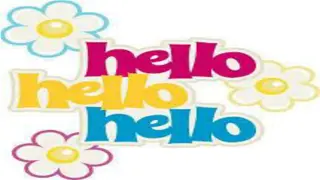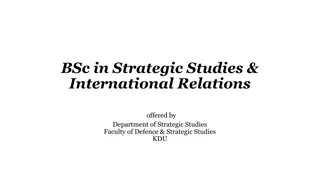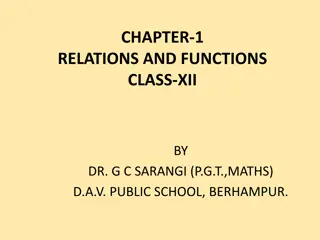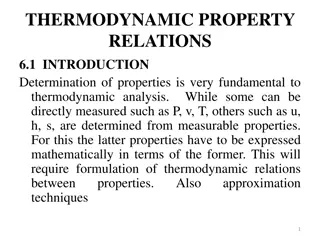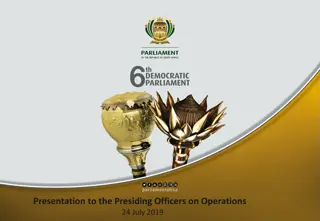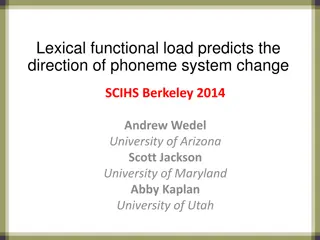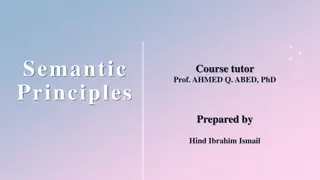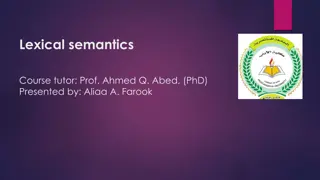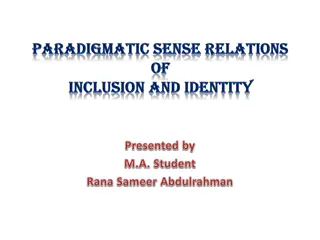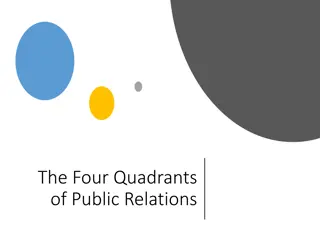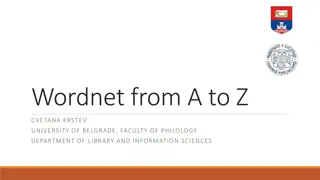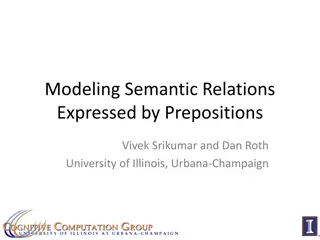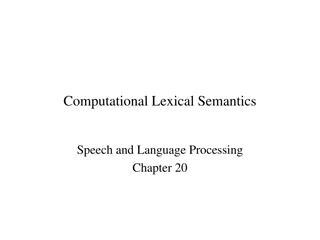Lexical Relations in Language
Explore the concepts of synonymy, antonymy, hyponymy, and prototype in linguistics. Learn about words with closely related meanings (synonyms), opposite meanings (antonyms), inclusive meanings (hyponyms), and characteristic examples (prototypes) within lexical relations.
Download Presentation

Please find below an Image/Link to download the presentation.
The content on the website is provided AS IS for your information and personal use only. It may not be sold, licensed, or shared on other websites without obtaining consent from the author.If you encounter any issues during the download, it is possible that the publisher has removed the file from their server.
You are allowed to download the files provided on this website for personal or commercial use, subject to the condition that they are used lawfully. All files are the property of their respective owners.
The content on the website is provided AS IS for your information and personal use only. It may not be sold, licensed, or shared on other websites without obtaining consent from the author.
E N D
Presentation Transcript
SYNONYMY Two or more words with very closely related meanings are called synonyms. They can often, though not always, be substituted for each other in sentences. In the appropriate circumstances, we can say, What was his answer? or What was his reply? with much the same meaning. Other common examples of synonyms are the pairs: almost/nearly, big/large, broad/wide, buy/purchase, cab/taxi, car/automobile, couch/sofa, freedom/liberty.
ANTONYMY Two forms with opposite meanings are called antonyms. Some common examples are the pairs: alive/dead, big/small, fast/slow, happy/sad, hot/cold, long/short, male/female, married/single, old/new, rich/poor, true/false.
Antonyms are usually divided into two main types, gradable (opposites along a scale) and non-gradable (direct opposites). Gradable antonyms, such as the pair big/small, can be used in comparative constructions like I m bigger than you and A pony is smaller than a horse. Also, the negative of one member of a gradable pair does not necessarily imply the other. For example, the sentence My car isn t old, doesn t necessarily mean My car is new.
HYPONYMY When the meaning of one form is included in the meaning of another, the relationship is described as hyponymy. Examples are the pairs: animal/dog, dog/poodle, vegetable/carrot, flower/rose, tree/banyan. The concept of inclusion involved in this relationship is the idea that if an object is a rose, then it is necessarily a flower, so the meaning of flower is included in the meaning of rose. Or, rose is a hyponym of flower.
Looking at the diagram, we can say that horse is a hyponym of animal or cockroach is a hyponym of insect . In these two examples, animal and insect are called the superordinate (= higher level) terms. We can also say that two or more words that share the same superordinate term are co- hyponyms. So, dog and horse are co-hyponyms and the superordinate term is animal.
PROTOTYPE While the words canary, cormorant, dove, duck, flamingo, parrot, pelican and robin are all equally co-hyponyms of the superordinate bird, they are not all considered to be equally good examples of the category bird . According to some researchers, the most characteristic instance of the category bird is robin. The idea of the characteristic instance of a category is known as the prototype. The concept of a prototype helps explain the meaning of certain words, like bird, not in terms of component features (e.g. has feathers , has wings ), but in terms of resemblance to the clearest example.
Homophones and homonyms When two or more different (written) forms have the same pronunciation, they are described as homophones. Common examples are bare/bear, meat/meet, flour/flower, pail/pale, right/write, sew/so and to/too/two.
We use the term homonyms when one form (written or spoken) has two or more unrelated meanings, as in these examples: bank (of a river) bank (financial institution) bat (flying creature) bat (used in sports) mole (on skin) mole (small animal) pupil (at school) pupil (in the eye) race (contest of speed) race (ethnic
POLYSEMY When we encounter two or more words with the same form and related meanings, we have what is technically known as polysemy. Polysemy can be defined as one form (written or spoken) having multiple meanings that are all related by extension. Examples are the word head, used to refer to the object on top of your body, on top of a glass of beer, person at the top of a company or department, and many other things. Other examples of polysemy are foot (of person, of bed, of mountain) or run (person does, water does, colors do
METONYMY The relatedness of meaning found in polysemy is essentially based on similarity. The head of a company is similar to the head of a person on top of and controlling the body. There is another type of relationship between words, based simply on a close connection in everyday experience. That close connection can be based on a container contents relation (bottle/water, can/juice), a whole part relation (car/wheels, house/roof) or a representative symbol relationship (king/crown, the President/the White House). Using one of these words to refer to the other is an example of metonymy.
COLLOCATION One final aspect of our knowledge of words has nothing to do with any of the factors considered so far. We know which words tend to occur with other words. If you ask a thousand people what they think of when you say hammer, more than half will say nail. If you say table, they ll mostly say chair, and butter elicits bread, needle elicits thread and salt elicits pepper. One way we seem to organize our knowledge of words is simply on the basis of collocation, or frequently occurring together.












